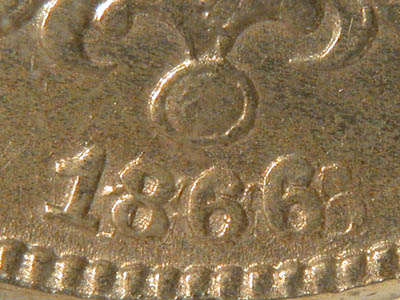A digression for those unfamiliar with camera terms
- if you know all about apertures and exposures and depth of field skip
this blue text.
Aperture describes how wide the lens of the camera
will open when taking a picture. Exposure determines how long the lens
will remain open. Many people use their digital camera in full-auto mode
- this means that the camera automatically picks both the best aperture
and exposure for the photograph. When taking typical snapshots this works
quite well, but it does not work well for coin photography.
Setting the camera to aperture priority mode means
that I am telling the camera how wide to open the lens. The camera will
still choose for me how long to keep the lens open - the exposure.
Depth of field describes how much of the image
will be in sharp focus. A greater depth of field means a greater area
of sharp focus at different distances from the camera lens. Depth of field
is related to aperture - the smaller the aperture, the greater the depth
of field. So I choose to use aperture priority mode so that I can select
an aperture that will allow a greater depth of field. When using a macro
lens focusing becomes very critical, so increasing the depth of field
is very beneficial.
Aperture is measured in f-stops. Higher f-stops
mean smaller lens openings.
Just for your information, most digital cameras
can also be put into shutter priority mode. This allows the photographer
to choose the exposure while the camera chooses the aperture. This is
good for fast moving objects - long exposures create motion blur. I have
yet to see a coin jump up and move around while I was trying to photograph
it, so shutter priority mode is not useful for coin photography.
